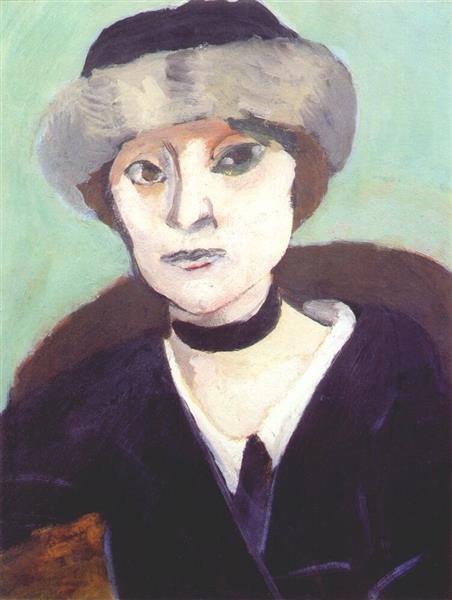Description
Henri Matisse, one of the most renowned figures of modern art, created in 1918 a piece that, though seemingly simple, deeply engages with the viewer: "Marguerite in a Fur Hat." This painting, measuring 46x60 cm, stands out not only for its technique but also for the intimacy and emotional closeness it projects. Marguerite, the artist's daughter, becomes a recurring subject in his work, and in this specific portrait, Matisse captures a stillness and serenity that reflect the intimate and affectionate relationship between painter and model.
From a compositional perspective, "Marguerite in a Fur Hat" is notable for its balanced structure and almost geometric equilibrium. Marguerite occupies almost the entire frame, her posture is frontal, and her gaze fixed on the viewer creates a direct and unavoidable interaction. The fur hat, which gives the work its title, becomes a focal element that accentuates the high Parisian fashion of the time, while providing a rich texture that contrasts with the simplicity of the background.
The use of color in this work is another aspect that deserves mention. Matisse, known for his mastery and innovative use of color, opts here for a contained but effective palette. Warm tones predominate, enhancing Marguerite's skin, while the soft purple of the background suggests a calm and melancholic atmosphere. The brushstrokes, though precise, retain a certain looseness that allows the painting to breathe, giving it a life of its own in front of the observer.
This portrait is not only a physical representation of Marguerite but also a testament to Matisse's artistic exploration during this period. At the height of the Fauvist movement, of which he is one of the founders, Matisse maintains in this work his interest in simplifying forms and structures, focusing on capturing the essence rather than the minutiae of detail. The austere presentation of the background and the lack of additional components direct all attention to his daughter, emphasizing her figure and the calm and reflective expression that emanates from her face.
The focus on portraying his family members is not uncommon in Matisse's career. Beyond Marguerite, his wife Amélie and other close ones appear in multiple works, and each representation varies in mood and technique but maintains a common thread of family intimacy. Similar works in spirit, such as "La blouse roumaine" (1940), are a testament to how Matisse constantly explores and reinterprets affective ties and their visual representation.
"Marguerite in a Fur Hat" is, therefore, a sublime example of Henri Matisse's skill as a portraitist, a delicate balance between form, color, and emotionality that transcends mere representation to engage with the universality of human relationships. This work, immortalized in the post-World War I context, resonates as a refuge of peace and reflection, a pause in time that invites us to look not only with our eyes but also with our soul.

